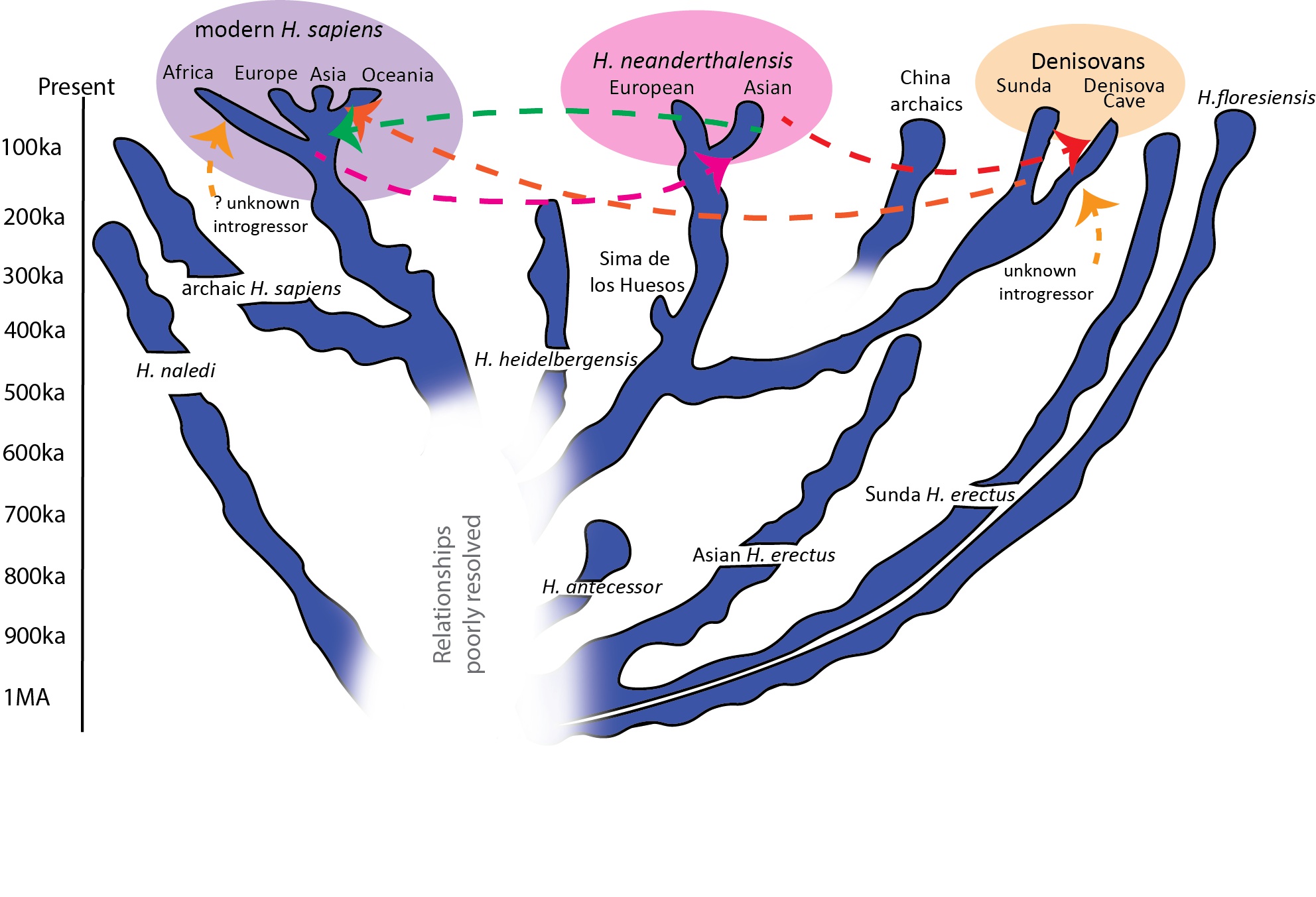In 2015, over 1500 fossils from a nearly inaccessible chamber in the Rising Star cave system near Johannesburg in South Africa were named as a new human species, Homo naledi (naledi means ‘star’ in the Sotho language). This species displays a unique combination of human and non-human traits throughout its skeleton. In 2017, another 130 fossils of naledi, including a nearly complete and probable male skull, were announced from a second and almost equally inaccessible chamber more than 100 m away in the cave system. Even more remarkably, the original assemblage of naledi fossils has been dated by a variety of physical methods to about 300,000 years old. This is surprisingly young for a species that still displays primitive characteristics found in fossils about 2 million years old, such as a small brain size, curved fingers, and the shape of the shoulder, trunk and hip joint. Yet the wrist, hands, legs and feet of naledi look more like those of Neanderthals and modern humans, and the teeth are quite small and simple, and set in lightly built jawbones.
Despite the young date for the naledi fossils, their anatomy indicates that in evolutionary terms they could lie close to the origin of our genus Homo, suggesting that this is a relic species, retaining many primitive traits from a much earlier time. Because naledi is currently only known from two sites within a single cave system, it’s unclear whether it was restricted to southern Africa or was more widespread (and perhaps already represented, but unrecognised, amongst other fossil remains). Additionally, although the naledi fossils are not so far associated with stone tools, it seems highly likely that its handiwork is present but unrecognised in the archaeological record of southern Africa. There are obvious parallels with the late survival of the so-called ‘hobbit’ (H. floresiensis) in Indonesia, but in that case isolation on the remote island of Flores probably accounts for its longevity. How did a comparably strange and small-brained species linger on in southern Africa, seemingly alongside more ‘advanced’ humans?
Another puzzle is that if naledi had a lifestyle and diet like that of other approximately contemporary human populations in Africa (as might be indicated by its teeth and lower body skeleton), how did it manage to successfully co-exist with those other human species (if they were also present in southern Africa)? Perhaps it was relatively isolated for much of its evolutionary history, or could it have avoided competition by continuing in a different niche for feeding and living, allowing it to survive longer – maybe by spending more time feeding in and around trees (as its upper body skeleton and curved fingers might suggest)?
The discovery and dating of naledi also question the usual assumption that (apart from in Flores) selection always drove the evolution of a larger brain in humans during the last million years. Brains are energetically very demanding, yet we, Neanderthals and early Chinese humans all evolved much larger brains – that of naledi was only about half the size, suggesting that this wasn’t always essential.
However we interpret the long-term survival of Homo naledi, its discovery and dating also remind us that most of Africa is still unexplored for its fossil human record, and its history even within the last 500,000 years could be as complex as the record outside of Africa, where there were at least 5 kinds of humans – Homo erectus, heidelbergensis, neanderthalensis, Denisovans and floresiensis. At around 300,000 years ago, there were probably at least 3 kinds of humans across the African continent: Homo heidelbergensis/rhodesiensis, early Homo sapiens, and Homo naledi. Who knows what else might have been out there?

How at least 18 partial or complete human bodies arrived in two separate locations deep within the cave system, well beyond any natural light, also remains a source of much debate. Virtually no other fossil material was excavated alongside the naledi bones and teeth, and therefore the authors of the naledi studies favour the idea of intentional and repeated disposals of dead bodies by other members of the species, deep within this pitch-black and difficult cave. Although no other satisfactory explanation for the deposition of the naledi remains has yet been proposed, many other experts consider such complex behaviour unlikely for a creature with a brain size close to that of a gorilla, particularly when a requirement for the controlled use of fire (for lighting) also seems to be necessary. It is going to take further finds in the Rising Star cave system and elsewhere before many of the questions raised by the discovery of Homo naledi can be answered satisfactorily.
 Paleobiology
Paleobiology
Responses